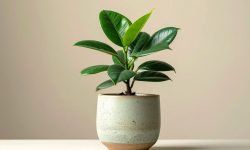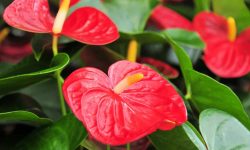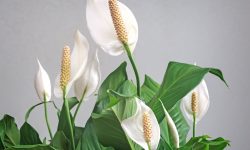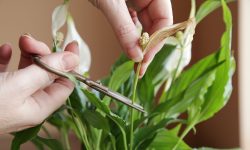Hibiscus, with their tropical flair and bold, trumpet-shaped flowers, are a stunning addition to any garden or patio. These vibrant bloomers captivate plant lovers with their dramatic presence, but timing their flowering is key to enjoying their full beauty. Whether you’re growing hardy hibiscus in colder climates or tropical varieties in containers, understanding their bloom cycle helps you anticipate those glorious, show-stopping blossoms.
This guide breaks down everything you need to know about hibiscus bloom timing—from seasonal cues and daylight requirements to how care practices and climate zones influence flowering. With the right knowledge, your hibiscus won’t just survive—they’ll bloom at their best when it matters most.
Understanding the Hibiscus Blooming Cycle
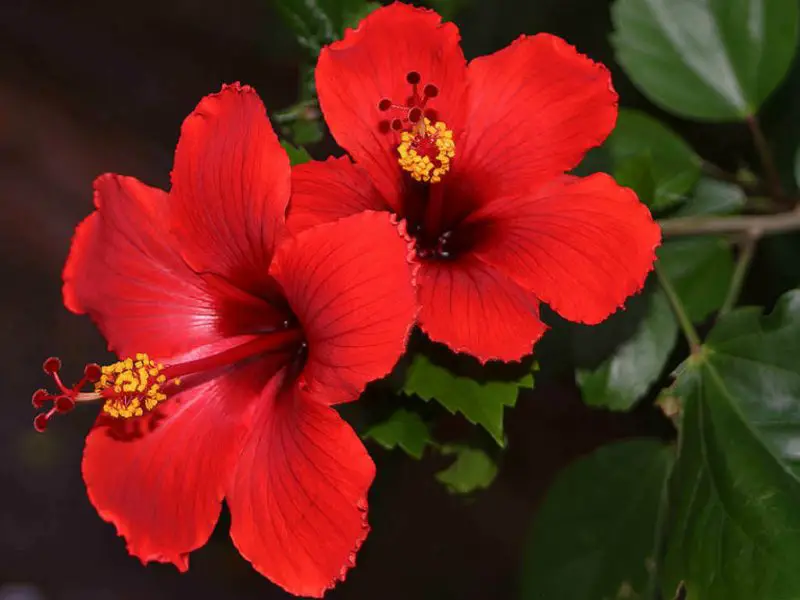
The hibiscus blooming cycle is a fascinating and delicate process that hinges on temperature, sunlight, plant maturity, and care practices. Most hibiscus varieties follow a repeat-blooming cycle, meaning they can flower continuously over several weeks or months during their active growing season. This cycle typically begins when temperatures consistently rise above 60°F (15°C) and daylight hours stretch to more than 12 hours per day.
Each bloom lasts only about one or two days, but healthy hibiscus plants often produce new buds daily, creating the illusion of non-stop flowering. After a flower drops, the plant focuses energy on forming new buds in a rhythmic cycle of bloom, rest, and renewal. Tropical hibiscus may bloom year-round in frost-free zones, while hardy types are more seasonal, blooming mainly from late spring through early fall.
Pruning, fertilization, and proper watering can dramatically influence the rhythm of this cycle. Plants with regular care often produce a more reliable and prolonged bloom cycle, while neglected or stressed plants may exhibit sporadic or stunted flowering. Recognizing this natural rhythm allows gardeners to better predict blooming times and optimize their care efforts for maximum floral impact.
Factors That Influence When Hibiscus Bloom
Temperature and Seasonal Cues
Temperature plays a central role in dictating when hibiscus plants enter their blooming phase. As tropical and subtropical plants, hibiscus are highly sensitive to both cold stress and heat fluctuations. Most tropical hibiscus varieties begin setting buds when daytime temperatures consistently range from 65°F to 85°F (18°C to 29°C), with nighttime temperatures staying above 55°F (13°C). Hardy hibiscus cultivars, on the other hand, tolerate cooler conditions but still require stable warmth in late spring to initiate blooming.
Seasonal cues such as increasing daylight in spring and stable warm temperatures act as biological signals for the plant to exit dormancy and start active growth. In temperate regions, hibiscus typically begin blooming in late spring or early summer, continuing into fall. In warmer zones or indoor environments with supplemental light and heat, blooming may occur intermittently year-round.
Sudden changes in temperature—like an unexpected cold snap or heatwave—can delay blooming or cause buds to drop. Likewise, prolonged periods of cool, overcast weather can slow down photosynthesis, limiting the energy available for bud development. By aligning care routines with the plant’s seasonal expectations, gardeners can help hibiscus transition smoothly into their bloom period and maintain consistent flowering through the warm months.
Soil Quality and Moisture Control
Healthy hibiscus blooms depend heavily on well-draining, nutrient-rich soil and consistent moisture. Ideally, soil should be slightly acidic to neutral (pH 6.0–7.0), allowing roots to absorb key nutrients like phosphorus for strong flower production. Adding compost or peat moss improves soil texture and fertility, boosting overall plant performance.
Moisture should be steady but not excessive. Hibiscus prefers evenly moist soil, not soggy conditions, which can lead to root rot and bud drop. Deep watering encourages stronger root systems, while mulch helps retain moisture and keeps roots cool. In containers, use quality potting mix with drainage holes, and check soil moisture regularly to avoid over- or under-watering. Balanced soil and moisture management are key to prolonged blooming.
Fertilization Timing and Formula
Proper fertilization is essential to encourage hibiscus plants to bloom consistently and vibrantly. Timing plays a crucial role. Begin fertilizing in early spring as new growth appears, then continue feeding every two to three weeks during the active growing season. This regular schedule supports steady bud formation and healthy foliage.
Choose a balanced fertilizer with slightly higher potassium content, such as a 10-10-15 or 5-10-10 ratio, which promotes blooming rather than just leaf growth. Liquid fertilizers are quickly absorbed and ideal for immediate nutrient needs, while slow-release granules offer longer-lasting support. In containers, use a diluted solution to prevent salt buildup in the soil.
Avoid fertilizing during the plant’s dormant season, typically late fall through winter, as excess nutrients can stress the roots and inhibit the natural blooming cycle. Consistent feeding with the right formula helps hibiscus maintain lush growth and frequent, vibrant flowers throughout its peak season.
Comparing Bloom Periods by Hibiscus Type
Understanding when hibiscus plants bloom begins with identifying which type you’re growing. Each variety—tropical hibiscus, hardy hibiscus, and native or species-specific varieties—has its own blooming rhythm influenced by its climate preferences, care needs, and environmental triggers. Knowing these differences helps gardeners set realistic expectations and provide optimal conditions for flowering success.
Tropical Hibiscus (Hibiscus rosa-sinensis)
Tropical hibiscus is known for its vibrant, showy flowers that thrive in warm, humid climates. This variety typically begins blooming in late spring and continues through summer, sometimes well into early fall in warmer regions. In zones 10 and above, it may bloom nearly year-round if temperatures stay consistently above 60°F and the plant receives ample light and nutrition.
However, tropical hibiscus is sensitive to cooler temperatures and will drastically reduce or stop blooming when temperatures fall below 55°F. If grown indoors or in containers, flowering may continue in winter with sufficient supplemental lighting and stable warmth. Shorter daylight hours and dry air can still cause flower drop, even in controlled environments, so indoor gardeners often supplement with grow lights and humidity trays to extend bloom duration.
Hardy Hibiscus (Hibiscus moscheutos and similar hybrids)
Hardy hibiscus varieties are bred to withstand colder climates and thrive in USDA zones 4 to 9. These perennials have a distinct seasonal blooming window, typically from mid to late summer, starting in July and continuing through September. Their blooms are large, often dinner-plate-sized, and last only a day or two each, but they appear in succession over several weeks.
Unlike tropical hibiscus, hardy types die back to the ground in winter and re-emerge in late spring. Because they bloom on new growth, proper pruning in early spring and consistent moisture through the growing season are key to a robust flower show. Their blooming may be delayed if spring temperatures remain cool, but once established, they offer reliable midsummer color in temperate gardens.
Rose of Sharon (Hibiscus syriacus)
Often categorized under hardy types, Rose of Sharon is technically a woody shrub and has a slightly different bloom period. It typically begins flowering in mid to late summer, often extending into early fall. This variety is highly adaptable and performs well in zones 5 to 9, making it a popular hedge or specimen plant in many home landscapes.
Rose of Sharon tends to bloom later than both tropical and herbaceous hardy hibiscus, which can be beneficial in extending seasonal color in mixed plantings. Its blooms are smaller but more abundant, and it tolerates drought and urban conditions better than other types. It can also self-seed prolifically, so regular deadheading is recommended to manage spread and encourage longer flowering.
Native Hibiscus Species (e.g., Hibiscus laevis, Hibiscus coccineus)
Native hibiscus species bloom patterns often reflect the local ecosystems they evolved in. For example, Hibiscus laevis (halberd-leaf hibiscus) blooms from mid to late summer in wetland areas across the southeastern and central United States. Similarly, Hibiscus coccineus (scarlet hibiscus) starts flowering in July and continues into September, thriving in swampy or rain garden conditions.
These native species are adapted to regional rainfall and sunlight patterns, often blooming reliably with minimal intervention when planted in the right environment. Their bloom times are valuable for supporting local pollinators and wildlife, and many gardeners use them in restoration projects or naturalized landscapes.
Summary of Differences
The key differences in bloom periods depend on climate adaptability, growth habit, and cultural requirements. Tropical hibiscus offers long-season or even year-round flowers in warm areas, while hardy and native hibiscus types bring dramatic midsummer to early fall displays in temperate zones. By selecting the right type for your growing region and providing targeted care, you can enjoy hibiscus blooms from early spring through late autumn—sometimes even longer.
Encouraging Hibiscus to Bloom on Schedule
Pruning Techniques for Timely Blooms
Pruning plays a critical role in regulating the blooming cycle of hibiscus by directing the plant’s energy toward vigorous, flower-producing growth. For tropical hibiscus, light pruning should be done in early spring before the plant enters its active growing phase. This helps shape the plant, stimulate new shoots, and encourages more abundant blooms throughout the season. Avoid pruning in late summer or fall, as it can remove developing buds and delay or reduce flowering.
Hardy hibiscus, which dies back to the ground in winter, should be pruned in early spring once new growth is visible at the base. Cutting the old stems down completely allows the plant to regenerate from strong new shoots. Always use clean, sharp tools and make cuts just above healthy leaf nodes to promote proper healing and branching.
Deadheading spent flowers during the blooming season is another simple yet effective practice. It prevents seed formation, which can otherwise signal the plant to slow or stop blooming. Consistent pruning and maintenance help synchronize the blooming period and result in a longer, more colorful display.
Best Practices for Indoor Hibiscus
Growing hibiscus indoors can be both rewarding and challenging, requiring attention to light, temperature, and humidity. The most important factor is providing ample bright light—ideally, placing the plant near a south- or west-facing window where it receives at least six hours of direct sunlight daily. Without sufficient light, hibiscus may grow leggy and fail to bloom altogether.
Temperature stability is equally crucial. Hibiscus thrives when indoor temperatures stay between 60°F and 85°F. Avoid placing the plant near drafty windows, air vents, or heat sources that can cause sudden fluctuations. During winter, supplemental grow lights can help maintain blooming potential when natural daylight is limited.
Humidity should be kept moderately high. Misting the plant or using a humidity tray can prevent dryness that leads to leaf drop. Regular feeding every two weeks during spring and summer using a balanced, water-soluble fertilizer promotes continuous blooming. Be careful not to overwater; hibiscus prefers slightly moist but well-drained soil.
Finally, indoor hibiscus benefit from occasional pruning to maintain shape and encourage new growth. With consistent care and a stable environment, your indoor hibiscus can bloom vibrantly year-round.
Repotting and Root Health Considerations
Hibiscus plants benefit from repotting every two to three years, especially when they show signs of becoming root-bound—such as roots circling the pot or growing out of drainage holes. Repotting not only provides more room for growth but also rejuvenates the soil environment. Use a container that’s only slightly larger to avoid excess moisture retention and choose a well-draining, slightly acidic potting mix rich in organic matter.
Before replanting, gently loosen the root ball and inspect for any signs of root rot, such as soft, brown, or foul-smelling roots. Remove any damaged portions with sterilized pruning shears. Ensuring good root health at this stage supports stronger nutrient absorption, reduces plant stress, and encourages more reliable blooming. After repotting, water thoroughly and place the plant in bright, indirect light to help it adjust to its new environment smoothly.
Seasonal Blooming Expectations by Region
In tropical and subtropical regions such as USDA zones 10–11, including parts of southern Florida, coastal southern California, and Hawaii, hibiscus plants can bloom nearly all year due to the consistently warm temperatures. These regions rarely experience frost, allowing continuous bud development and flower production, especially when daytime temperatures remain above 65°F and nighttime temperatures stay mild.
In temperate zones like 7–9, including parts of the southeastern and southwestern United States, hibiscus generally begins blooming in late spring, typically around May, and continues through early to mid-fall, depending on local conditions. Peak blooming often occurs from June through August, when the days are longest and temperatures are optimal.
In cooler climates such as zones 5–6, hibiscus plants grown outdoors are limited to a much shorter blooming window, usually from mid-June through early September. Frost risk in early spring and fall restricts growth. In these areas, gardeners often grow hibiscus in pots so they can be brought indoors during the colder months to extend the bloom period using supplemental light and warmth.
Understanding your region’s climate and adjusting planting, fertilization, and pruning schedules accordingly helps maximize hibiscus blooms in any growing zone.
Recognizing Signs That Hibiscus Will Bloom
Bud Development and Stem Behavior
Leaf Color and Texture Changes
The condition of hibiscus leaves offers early signals about the plant’s blooming readiness and overall health. Vibrant green, glossy leaves typically indicate optimal photosynthesis and nutrient absorption—conditions that favor bud development and flower production.
When leaves turn pale, yellow, or dull, this can signal stress from poor soil nutrition, overwatering, or lack of sunlight. Yellowing at the base may indicate nitrogen deficiency, while bronzed or scorched leaves often result from intense sun or wind exposure. Curling or leathery textures may point to inconsistent watering or salt buildup in the soil.
Monitoring subtle changes in leaf color and texture allows gardeners to adjust care practices in time to prevent flower delay or loss. Restoring healthy foliage through targeted fertilization, proper watering, and sun regulation helps reestablish the ideal environment for hibiscus blooms to thrive.
Flower Longevity and Replacement Cycle
Hibiscus blooms are famously short-lived, often lasting only a single day for tropical varieties and two to three days for hardy types. While the fleeting nature of each bloom might seem disappointing, hibiscus plants are prolific bloomers when healthy. They follow a rapid replacement cycle, continuously producing new buds that open in succession during the active growing season.
This replacement process is tightly linked to the plant’s energy balance. When provided with consistent care—especially adequate sunlight, balanced fertilization, and regular pruning—the plant maintains a near-constant bloom cycle from late spring through early fall. A lapse in any of these care elements, however, can interrupt the rhythm and reduce the number of new buds.
Deadheading spent flowers is essential, not because it triggers new blooms directly, but because it prevents energy from being wasted on seed development. Encouraging fresh flower cycles requires attention to both nutrition and environmental conditions. By understanding and supporting this natural turnover, gardeners can enjoy weeks or even months of uninterrupted floral display.
Addressing Blooming Delays or Failures
Blooming delays or outright failure to flower in hibiscus plants can stem from a wide range of cultural or environmental issues. Identifying the root cause is essential to restore blooming, and each possible factor requires a specific approach. Dưới đây là phân tích chi tiết từng nguyên nhân và cách khắc phục:
Insufficient Light Exposure
Hibiscus plants are sun-loving and require at least six hours of direct sunlight daily to initiate healthy bud formation. If a plant is in partial shade or indoors without supplemental lighting, it may develop lush foliage without producing blooms. To correct this, gradually acclimate the plant to a brighter location or provide full-spectrum grow lights for indoor specimens.
Overfertilization with Nitrogen
An imbalance in fertilizer—especially one too rich in nitrogen—can stimulate excessive leaf growth at the expense of buds. This results in a leafy but non-blooming hibiscus. A switch to a bloom-boosting formula high in phosphorus and potassium can redirect energy toward flower production. Apply at intervals suitable to the growing season and always follow dilution guidelines to avoid root burn.
Irregular Watering or Water Stress
Water stress, whether from underwatering or overwatering, disrupts the plant’s hormonal balance and can halt blooming. Underwatered hibiscus plants will prioritize survival over reproduction, while waterlogged roots suffer from oxygen deprivation and nutrient uptake failure. A well-draining soil mix and a consistent watering schedule—keeping soil evenly moist but never soggy—are key to maintaining bloom readiness.
Pruning at the Wrong Time
While pruning promotes new growth and branching, doing it too late in the season or too aggressively may remove developing buds. Late-season hard pruning, particularly in fall, can eliminate all current flower potential. Ideally, pruning should be done in early spring when growth resumes, allowing new branches ample time to mature and set buds before the blooming cycle begins.
Rootbound or Nutrient-Deficient Conditions
When grown in containers, hibiscus plants can become rootbound over time, restricting their ability to absorb nutrients and water efficiently. This physical stress often leads to fewer blooms or none at all. Repotting into a slightly larger container and refreshing the soil mix ensures adequate root space and nutrient availability. Adding slow-release fertilizer or enriching the soil with organic matter can also restore blooming.
Environmental Stress and Temperature Fluctuations
Abrupt temperature drops, prolonged heatwaves, or dramatic changes in humidity can all interfere with bloom formation. Hibiscus plants are highly sensitive to cold and may enter a state of dormancy or stress if nighttime temperatures fall below 55°F (13°C). Similarly, exposure to strong wind or dry indoor air can delay blooming. Protecting plants from temperature extremes and maintaining a stable environment encourages reliable flowering.
Pest and Disease Interference
Infestations by aphids, whiteflies, or spider mites often sap energy from hibiscus plants, leading to bud drop or poor bloom quality. Fungal infections in roots or stems may also compromise nutrient transport. Regular inspection and treatment with insecticidal soap, neem oil, or appropriate fungicides are essential to keeping the plant healthy and bloom-capable.
Frequently Asked Questions
What months do hibiscus typically bloom in different climates?
In tropical and subtropical climates such as USDA zones 9 through 11, hibiscus usually bloom from early spring through late fall, often starting as early as March and continuing into November. In temperate regions or cooler zones, blooming may begin in late May or June and taper off by early autumn. Container-grown hibiscus indoors under grow lights can bloom nearly year-round with proper care.
Why is my hibiscus not blooming despite appearing healthy?
A healthy-looking hibiscus that refuses to bloom is often a sign of imbalanced care. Over-fertilization with high-nitrogen formulas can promote leaf growth at the expense of flowers. Inadequate light is another major factor—hibiscus need full sun for at least 6 hours daily to set buds. Poor pruning timing, root-bound conditions, or stress from recent repotting may also delay blooms.
How long does each hibiscus flower last?
Each individual hibiscus bloom typically lasts for only one to two days. However, healthy plants continuously produce new buds throughout the growing season, creating the appearance of consistent flowering. Some varieties, especially tropical hybrids, are known for near-daily blooming in ideal conditions.
Can pruning encourage more blooms?
Yes, strategic pruning can significantly enhance flowering. Pruning in late winter or early spring helps redirect the plant’s energy into new branch growth, where hibiscus typically form buds. Removing dead or crossing stems also improves airflow and overall plant vigor. Avoid heavy pruning during mid-to-late summer, as it may remove buds about to bloom.
How can I ensure hibiscus blooms indoors during winter?
To encourage winter blooms indoors, place the hibiscus near a bright south-facing window or use full-spectrum grow lights for 10–12 hours per day. Maintain indoor temperatures above 60°F (15°C), avoid sudden drafts, and keep humidity levels moderate. Use a balanced, bloom-promoting fertilizer once every 2 to 3 weeks and reduce watering slightly during dormancy while still keeping the soil lightly moist.
Conclusion: Supporting Hibiscus Blooms Year After Year
Understanding when hibiscus bloom allows gardeners to provide better care, plan displays, and enjoy the full beauty of this spectacular plant. Whether you grow hardy or tropical varieties, timing, temperature, and care all work together to encourage vibrant flowers throughout the season. With attention to your hibiscus’s specific needs and local climate, you can ensure a consistent and rewarding bloom cycle every year.

